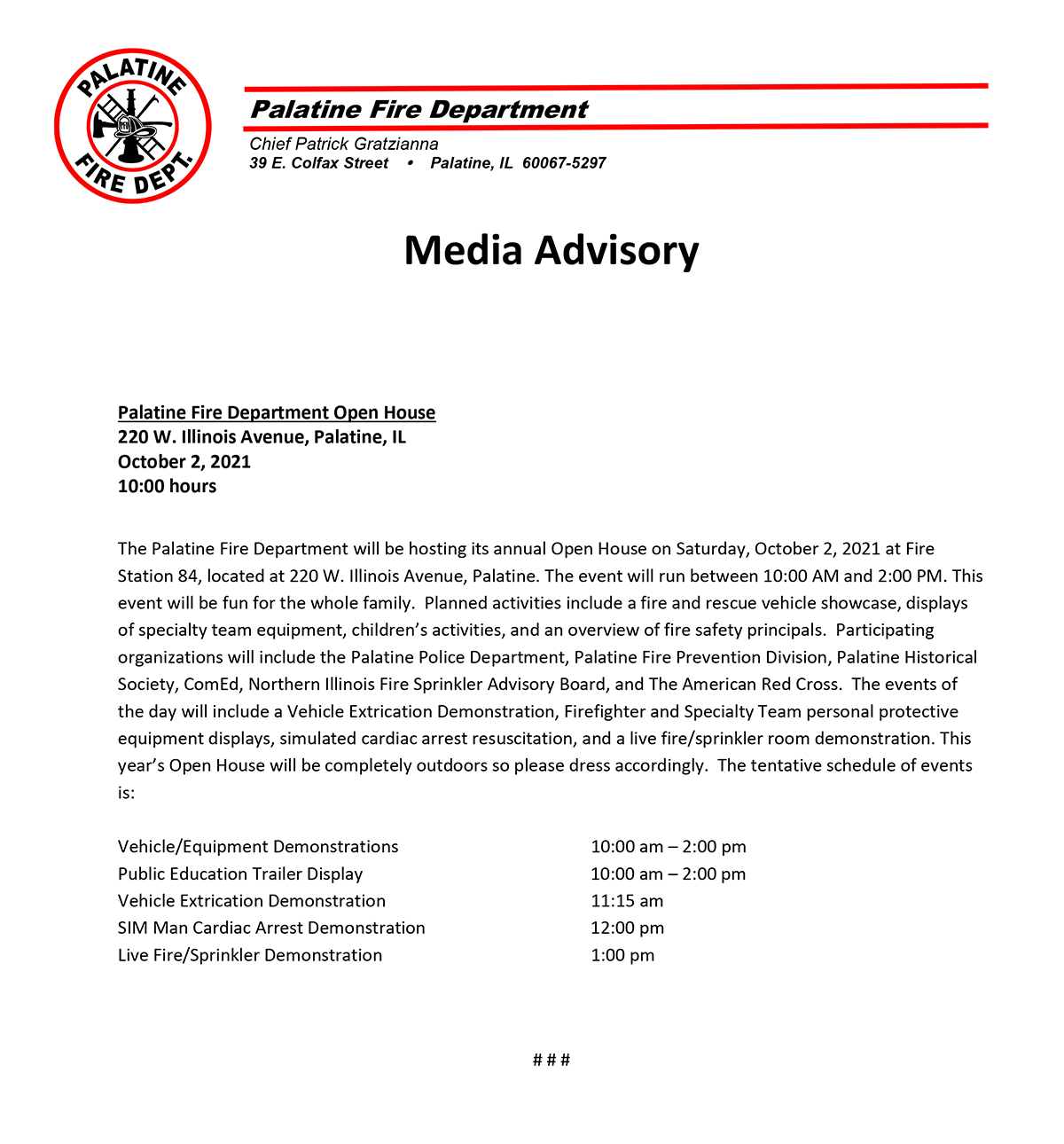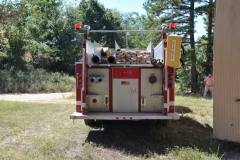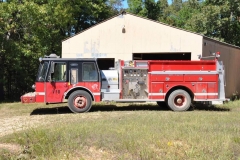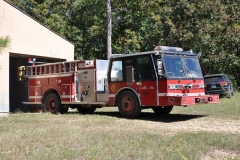
Archive for September 27th, 2021
From Phil Stenholm:
Another installment about History of Evanston Fire Department
MOTOROLA
During the decade of the 1920’s, as the Evanston Fire Department was expanding to an 84-man force, sixty new firemen were hired. During the decade of the 1930’s, however, only nine new men were hired, and only four during the height of the Depression 1932 – 1938. It was difficult to find work during the Depression, and anyone who had a job made sure to keep it! So why were there any openings in the EFD during the 1930’s? In most of the cases, a veteran fireman unable to work any longer simply elected to retire with a pension; but in four other cases, leaving the EFD was not a matter of choice.
Besides the fatal heart attack suffered by Assistant Chief Ed Johnson in October 1932, Fireman Milton Jasper (Truck Co. 1) died while off-duty in March 1931, Lt. Frank Didier (Engine Co. 2) died of a heart attack at his home in September 1931, and Fireman Fred Walters (Engine Co. 5) died at Evanston Hospital after suffering a pulmonary embolism following a combined training exercise with the Wilmette Fire Department at Gilson Park in October 1936.
Meanwhile, a number of firefighters received promotions in the years 1929-34.
1. Fireman Henry Dorband was promoted to lieutenant in 1929 and was assigned as assistant company officer of Engine Co. 5, with Lt. Ed Newton transferring from Engine Co. 5 to Engine Co. 4, replacing the deceased Walt Boekenhauer.
2. Fireman Harry Jasper was promoted to lieutenant in 1931 and replaced the deceased Frank Didier as assistant company officer of Engine Co. 2.
3. Captain (and Fire Prevention Inspector) J. E. Mersch was promoted to Assistant Chief Fire Marshal in 1932, and Captain Carl Windelborn was promoted to Assistant Chief Fire Marshal in 1933, replacing the deceased Ed Johnson as a platoon commander and company officer. Assistant Chief Tom McEnery was transferred from Truck Co. 2 to Truck Co. 1 at this same time, with Chief Windelborn assigned to Truck Co. 2.
4. Lieutenants Anthony Steigelman and John Wynn were promoted to captain in 1933 and Lt. Michael Garrity was promoted to captain in 1934, with Steigelman replacing the retired George Hargreaves as company officer of Engine Co. 1, Wynn replacing the promoted Carl Windelborn as company officer of Engine Co. 2, and Garrity replacing the retired Pat Gaynor as company officer of Engine Co. 4.
5. Firemen Frank Sherry Sr and Jim Geishecker were promoted to lieutenant in 1933 and Fireman William Elliott was promoted to lieutenant in 1934, with Sherry replacing John Wynn as assistant company officer of Engine Co. 1, Geishecker replacing Anthony Steigelman as assistant company officer of Truck Co. 2, and Elliott replacing Michael Garrity as assistant company officer of Truck Co. 1.
With budget cuts and a reduction in staffing, it is fortunate that the Depression years saw a limited number of major fires in Evanston. The worst ones were at the Hemenway Methodist Church at 929 Chicago Avenue in September 1932 ($52,000 loss), and at the Weise Brothers planing mill & lumber yard at 1124 Dodge Avenue ($35,000 loss) on October 8, 1937 (the 65th anniversary of the start of the Great Chicago Fire). Actually, the EFD fought more large fires in other towns than it did in Evanston during this period!
During the decade of the 1920’s, as the Evanston Fire Department was expanding to an 84-man force, sixty new firemen were hired. During the decade of the 1930’s, however, only nine new men were hired, and only four during the height of the Depression 1932 – 1938. It was difficult to find work during the Depression, and anyone who had a job made sure to keep it! So why were there any openings in the EFD during the 1930’s? In most of the cases, a veteran fireman unable to work any longer simply elected to retire with a pension; but in four other cases, leaving the EFD was not a matter of choice.
Besides the fatal heart attack suffered by Assistant Chief Ed Johnson in October 1932, Fireman Milton Jasper (Truck Co. 1) died while off-duty in March 1931, Lt. Frank Didier (Engine Co. 2) died of a heart attack at his home in September 1931, and Fireman Fred Walters (Engine Co. 5) died at Evanston Hospital after suffering a pulmonary embolism following a combined training exercise with the Wilmette Fire Department at Gilson Park in October 1936.
Meanwhile, a number of firefighters received promotions in the years 1929-34.
1. Fireman Henry Dorband was promoted to lieutenant in 1929 and was assigned as assistant company officer of Engine Co. 5, with Lt. Ed Newton transferring from Engine Co. 5 to Engine Co. 4, replacing the deceased Walt Boekenhauer.
2. Fireman Harry Jasper was promoted to lieutenant in 1931 and replaced the deceased Frank Didier as assistant company officer of Engine Co. 2.
3. Captain (and Fire Prevention Inspector) J. E. Mersch was promoted to Assistant Chief Fire Marshal in 1932, and Captain Carl Windelborn was promoted to Assistant Chief Fire Marshal in 1933, replacing the deceased Ed Johnson as a platoon commander and company officer. Assistant Chief Tom McEnery was transferred from Truck Co. 2 to Truck Co. 1 at this same time, with Chief Windelborn assigned to Truck Co. 2.
4. Lieutenants Anthony Steigelman and John Wynn were promoted to captain in 1933 and Lt. Michael Garrity was promoted to captain in 1934, with Steigelman replacing the retired George Hargreaves as company officer of Engine Co. 1, Wynn replacing the promoted Carl Windelborn as company officer of Engine Co. 2, and Garrity replacing the retired Pat Gaynor as company officer of Engine Co. 4.
5. Firemen Frank Sherry Sr and Jim Geishecker were promoted to lieutenant in 1933 and Fireman William Elliott was promoted to lieutenant in 1934, with Sherry replacing John Wynn as assistant company officer of Engine Co. 1, Geishecker replacing Anthony Steigelman as assistant company officer of Truck Co. 2, and Elliott replacing Michael Garrity as assistant company officer of Truck Co. 1.
With budget cuts and a reduction in staffing, it is fortunate that the Depression years saw a limited number of major fires in Evanston. The worst ones were at the Hemenway Methodist Church at 929 Chicago Avenue in September 1932 ($52,000 loss), and at the Weise Brothers planing mill & lumber yard at 1124 Dodge Avenue ($35,000 loss) on October 8, 1937 (the 65th anniversary of the start of the Great Chicago Fire). Actually, the EFD fought more large fires in other towns than it did in Evanston during this period!
During the early-morning hours of January 15, 1931, the Evanston Fire Department assisted the Wilmette F. D. fighting a spectacular blaze atop the Baha’i Temple at 100 Linden Ave, With Wilmette and Evanston firemen working in bitter-cold, firefighting efforts were initially hampered by frozen hydrants, and engine companies had considerable difficulty throughout the night maintaining the water-pressure needed to ultimately extinguish the flames. EFD Truck 1’s “big stick” was extended to its full 85-feet to provide an elevated master-stream, but the steel skeleton of the now world-famous landmark could not be saved. Still under construction at the time of the fire, the structure sustained $50,000 in damage, and because of the fire, the Great Depression, and World War II, the temple was not completed for another twenty years.
Then on July 27, 1933, firefighters from Evanston, Chicago, Niles Center, and Morton Grove assisted the small Tessville volunteer fire department battling a blaze that destroyed the Becker Box Company factory at Touhy & Lincoln. (Tessville is now known as “Lincolnwood”). The Evanston F. D. also assisted the Niles Center Fire Department at a conflagration at the Hughes Oil Company storage yard on Howard Street near the C&NW RR Mayfair Division tracks in Niles Center on August 17, 1934. (Niles Center is now known as “Skokie”). Earlier that same year (on May 19th), EFD Engine Co. 1 was moved into Chicago F. D. Engine Co. 71’s quarters at 6239 N. California Avenue, helping to provide fire protection to Rogers Park and the far north-side of Chicago while most CFD companies were busily engaged fighting an inferno that destroyed much of the Union Stockyards and surrounding neighborhood. On November 18, 1935, EFD Engine Co. 3, Engine Co. 1, and Truck Co. 2 assisted the Wilmette F. D. battling a blaze that gutted the D. S. Lyman drug store at 4th & Linden ($30,000 loss).
Although budget cuts stemming from the Great Depression kept the Evanston Fire Department from making any significant purchases in the years 1933-36, there were a few minor upgrades. In 1935, the aging wooden ladders on the city service truck were replaced with new ones, and in 1936, the chief’s 1926 Lincoln Model “L” automobile was traded in for a new 1936 Ford Tudor Deluxe sedan equipped with a “Motorola Police Cruiser” AM radio receiver.
The Galvin Company had been manufacturing its Motorola AM radio receivers for civilian automobiles since 1930, and the Evanston Police Department had been one the first police departments in the nation to place Motorola Model 5T71 AM radios into its patrol cars. When they were initially made available, the vacuum-tube radios cost almost as much as a new car, required complicated installment and maintenance procedures, and were subject to sudden failure if a tube blew or a wire became disconnected while driving.
Also, the radios were strictly one-way receivers, and Chicago-area police radio traffic – at first limited to emergency broadcasts only — was transmitted over WGN radio’s 720 KHZ frequency, available to be heard by anyone with an AM radio receiver. Obviously this could not be sustained long-term, so in 1935 police departments were granted the use of AM radio frequencies between 1550 and 2800 KHz.
At about that same time, Galvin invented its “Motorola Police Cruiser” AM radio specifically for the use of police departments, and the Ford motor company offered a factory-installed Motorola Police Cruiser radio at a discounted price as part of its new “police package” in 1936. The Evanston Police Department had ten patrol cars, ten motorcycles, and one ambulance in service at that time, but only its new Ford patrol cars were equipped with the Motorola Police Cruiser AM radios, tuned to the Chicago Police Department’s new radio frequency.
EFD Chief Hofstetter’s ’36 Ford Tudor Deluxe sedan was likewise equipped with a Motorola Police Cruiser radio, and so the chief — or the platoon commander, in the absence of the chief — could receive emergency Evanston Fire Department radio traffic via AM radio, or even just a message to contact the Evanston Police switchboard.
Among his other duties, the chief’s buggy-driver was in charge of monitoring the radio, but because the Motorola Police Cruiser radio was strictly one-way (receive-only), there was no way to acknowledge a radio transmission. The “two-way” FM automobile radio was invented in the 1940’s and two-way radios were acquired by the City of Evanston for police cars and for the fire chief’s car in 1945-46, but two-way radios were not placed aboard EFD engines and trucks until 1952.
Then on July 27, 1933, firefighters from Evanston, Chicago, Niles Center, and Morton Grove assisted the small Tessville volunteer fire department battling a blaze that destroyed the Becker Box Company factory at Touhy & Lincoln. (Tessville is now known as “Lincolnwood”). The Evanston F. D. also assisted the Niles Center Fire Department at a conflagration at the Hughes Oil Company storage yard on Howard Street near the C&NW RR Mayfair Division tracks in Niles Center on August 17, 1934. (Niles Center is now known as “Skokie”). Earlier that same year (on May 19th), EFD Engine Co. 1 was moved into Chicago F. D. Engine Co. 71’s quarters at 6239 N. California Avenue, helping to provide fire protection to Rogers Park and the far north-side of Chicago while most CFD companies were busily engaged fighting an inferno that destroyed much of the Union Stockyards and surrounding neighborhood. On November 18, 1935, EFD Engine Co. 3, Engine Co. 1, and Truck Co. 2 assisted the Wilmette F. D. battling a blaze that gutted the D. S. Lyman drug store at 4th & Linden ($30,000 loss).
Although budget cuts stemming from the Great Depression kept the Evanston Fire Department from making any significant purchases in the years 1933-36, there were a few minor upgrades. In 1935, the aging wooden ladders on the city service truck were replaced with new ones, and in 1936, the chief’s 1926 Lincoln Model “L” automobile was traded in for a new 1936 Ford Tudor Deluxe sedan equipped with a “Motorola Police Cruiser” AM radio receiver.
The Galvin Company had been manufacturing its Motorola AM radio receivers for civilian automobiles since 1930, and the Evanston Police Department had been one the first police departments in the nation to place Motorola Model 5T71 AM radios into its patrol cars. When they were initially made available, the vacuum-tube radios cost almost as much as a new car, required complicated installment and maintenance procedures, and were subject to sudden failure if a tube blew or a wire became disconnected while driving.
Also, the radios were strictly one-way receivers, and Chicago-area police radio traffic – at first limited to emergency broadcasts only — was transmitted over WGN radio’s 720 KHZ frequency, available to be heard by anyone with an AM radio receiver. Obviously this could not be sustained long-term, so in 1935 police departments were granted the use of AM radio frequencies between 1550 and 2800 KHz.
At about that same time, Galvin invented its “Motorola Police Cruiser” AM radio specifically for the use of police departments, and the Ford motor company offered a factory-installed Motorola Police Cruiser radio at a discounted price as part of its new “police package” in 1936. The Evanston Police Department had ten patrol cars, ten motorcycles, and one ambulance in service at that time, but only its new Ford patrol cars were equipped with the Motorola Police Cruiser AM radios, tuned to the Chicago Police Department’s new radio frequency.
EFD Chief Hofstetter’s ’36 Ford Tudor Deluxe sedan was likewise equipped with a Motorola Police Cruiser radio, and so the chief — or the platoon commander, in the absence of the chief — could receive emergency Evanston Fire Department radio traffic via AM radio, or even just a message to contact the Evanston Police switchboard.
Among his other duties, the chief’s buggy-driver was in charge of monitoring the radio, but because the Motorola Police Cruiser radio was strictly one-way (receive-only), there was no way to acknowledge a radio transmission. The “two-way” FM automobile radio was invented in the 1940’s and two-way radios were acquired by the City of Evanston for police cars and for the fire chief’s car in 1945-46, but two-way radios were not placed aboard EFD engines and trucks until 1952.



































